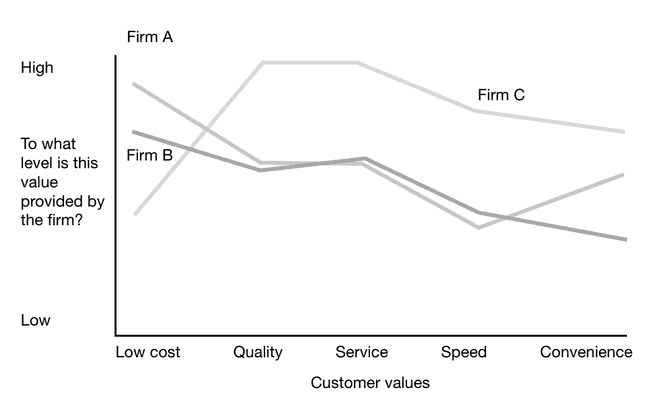Blue ocean strategy
Emotional intelligence is the ability to monitor your own and other people’s emotions
Most businesses compete in'red ocean' markets with well-established competitors and well-defined customer expectations. Occasionally, a company will establish a 'blue ocean' market for a product or service that has never been seen before — a technique that usually results in far higher profits.
When to use it
● To figure out what makes your current strategy unique (if anything).
● To make your current strategy more distinct.
● Identifying potential for completely new offerings.
Origins
For many years, researchers have known that successful businesses are those who 'break the rules' in their field. Ikea, for example, rose to popularity in the 1970s as a result of its innovative manufacturing and distribution methods.
The internet's arrival in the mid-1990s made it simpler for new businesses to defy the rules of established industries, and it was during this time that the term "business model" became popular. Amazon.com, for example, competed against established book shops with a unique business model that differed significantly from that of Barnes & Noble or Waterstones.
Many researchers studied the process of business model innovation during this period and into the 2000s, with a view to providing advice to firms about how they could develop new business models themselves, or protect themselves against entrants with new business models. Important publications were Leading the Revolution (Hamel), and All the Right Moves (Markides). But the most influential work on business model innovation was probably Blue Ocean Strategy by INSEAD professors Chan Kim and Renee Mauborgne. While the underlying ideas across these publications are similar, Blue Ocean Strategy provides the most comprehensive guide for how to define and develop new market opportunities.
What it is
The world of business opportunities is divided into red and blue oceans by Kim and Mauborgne. Red oceans are well-established businesses with well-defined boundaries that exist today. Firms compete for market share using well-known rules of the game, but as the market becomes more crowded, profits and growth opportunities diminish. Automobiles, consumer goods, and aircraft are all red-ocean industries.
Blue oceans are industries that do not yet exist — they are an untapped market space free of competition. Demand is produced rather than battled over in a blue ocean, and expansion opportunities are plentiful. In blue waters, competition is unimportant because the rules of the game are yet to be established. Apple is known for seeing blue ocean opportunities; for example, they pioneered the industry for legal online music sales (iTunes) and the market for tablet computers (the iPad).
How to use it
A blue ocean strategy is a series of tools designed to assist businesses in identifying and colonizing blue ocean prospects. Understanding customer values – the fundamental wants or needs that customers have – is the beginning point for finding creative ways to address these values. A'strategy canvas,' which lists the range of customer values on the horizontal axis and the extent to which each value is met on the vertical axis, is the best way to do this (see the figure overleaf). You can see how distinct your present strategy is by putting your firm's profile on the strategy canvas and comparing it to the profiles of close and distant competitors. Firms A and B have fairly similar strategies in the chart above, however firm C has a unique strategy.
The strategy canvas depicts the present state of play in the recognized market area, allowing you to identify what factors the industry competes on and where the competition is investing right now. It also starts a discussion about what may be improved — it allows you to look into areas where companies are failing to meet existing customer needs and brainstorm new sources of value that no one has yet explored. This conversation is guided by these four questions:
● What aspects that the industry has taken for granted can be eliminated?
● What elements can be significantly decreased below the industry standard?
● What elements can be elevated well beyond the industry norm?
● What factors could be developed that the industry has never provided?

The goal of this study is 'value innovation,' which entails pursuing difference while keeping costs low, as well as producing more value for your company and customers. This is in stark contrast to Michael Porter's original ideas about competitive strategy, which encouraged businesses to choose between differentiation and low cost. In general, you can be both differentiated and low cost when operating in a blue ocean, but blue oceans are progressively colonized by other enterprises, industry regulations are established, and the ocean turns red. Porter's original concerns about needing to pick between differentiation and cheap cost are once again true after the water turns crimson.
Top practical tip
Another strategy is to make sure that the people involved in the discussion are very diverse, including people who are relatively new to your company and thus more open to unconventional ideas.
Top pitfall
Further reading
Hamel, G. (2000) Leading the Revolution. Boston, MA: Harvard Business School Press.
Markides, C. (1999) All the Right Moves. Boston, MA: Harvard Business School Press.
Kim, C. and Mauborgne, R. (2005) Blue Ocean Strategy. Boston, MA: Harvard Business School Press.